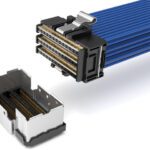Connectors in Embedded Computers: Upgrading Performance while Downsizing
Two conferences highlighted the ongoing changes in wiring, thermals, backplanes, and many more connector technologies. Bob Hult provides the buzz from VITA’s 2017 Embedded Tech Trends forum, and then another look at DesignCon 2017.
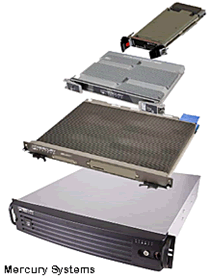 Embedded computers have existed in the shadow of much larger computer markets for commercial and communication applications. Unlike general purpose computers, embedded computers are typically designed to support very specific applications with demands for highly reliable real-time response. They are a classic example of a low-volume, high-feature mix device. In reality, they are everywhere, serving critical roles in equipment ranging from weapon targeting to traffic control. Expanding demand for automation will likely increase the visibility of embedded computers as well as the components used to build them.
Embedded computers have existed in the shadow of much larger computer markets for commercial and communication applications. Unlike general purpose computers, embedded computers are typically designed to support very specific applications with demands for highly reliable real-time response. They are a classic example of a low-volume, high-feature mix device. In reality, they are everywhere, serving critical roles in equipment ranging from weapon targeting to traffic control. Expanding demand for automation will likely increase the visibility of embedded computers as well as the components used to build them.
Embedded systems may consist of a single PCB or multiple boards packaged in a rugged enclosure. They typically live in harsh operating environments that can include heavy equipment, unmanned aerial vehicles, shipboard gunnery, industrial process control, or avionics. As a result, connectors, both internal and external, must be able to survive extreme shock, vibration, fluids, and temperature extremes. A key design principle for these modular computers has traditionally been SWaP (Size, Weight, and Power). Because they are buried within another piece of equipment they must be as small as possible, add minimal weight, and consume as little power as possible. Emphasis on absolute reliability is assumed.
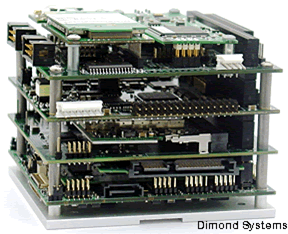 Because embedded computers are so specialized, engineers who develop them require design flexibility to address myriad of mechanical and performance demands. Standardized form factors defined by an industry specification such as PC/104 allow engineers to easily create custom systems using a library of standard PCBs. The ability to stack these boards using a defined multi-sourced interconnect system has allowed the PC/104 standard to spawn a vibrant market for compatible PCBs and remain viable since 1987.
Because embedded computers are so specialized, engineers who develop them require design flexibility to address myriad of mechanical and performance demands. Standardized form factors defined by an industry specification such as PC/104 allow engineers to easily create custom systems using a library of standard PCBs. The ability to stack these boards using a defined multi-sourced interconnect system has allowed the PC/104 standard to spawn a vibrant market for compatible PCBs and remain viable since 1987.
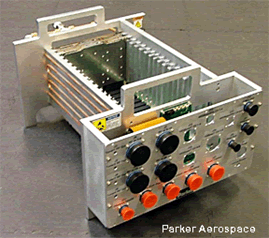 Due to requirements of extreme durability, many embedded computer systems use standard military rectangular and circular connectors in panel-mounted input/out applications.
Due to requirements of extreme durability, many embedded computer systems use standard military rectangular and circular connectors in panel-mounted input/out applications.
The VITA Standards Organization (VS0) has been instrumental in creating a series of embedded computer standard form factors that allow newer systems to address a world of challenging applications. VITA has long been a proponent of “open system architecture” that discourages the use of proprietary designs that can limit compatibility among products from multiple sources.
New generations of embedded computers have added the requirement for dramatically increased speed. Presentations at a recent Embedded Tech Trends Forum sponsored by VITA revealed how far embedded computing has advanced. For example, equipment that is capable of high-speed object identification and comparison has become a military priority. Embedded systems today are capable of image processing at the rate of 1.2 million images per second. In order to support these speeds, backplane connectors that were maxed out at 3.125 Gb/s just a few years ago are now projected to perform to 10 Gb/s.
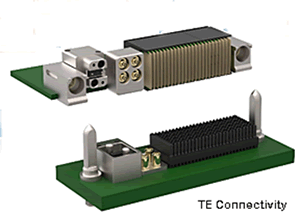
The MultiGig RT 2R connector from TE Connectivity is a good example of a high-speed backplane connector specifically designed to meet the stringent requirements of the VITA VPX specification. Rather than relying on a traditional pin and socket interface, this connector utilizes unique PCB wafers to survive extreme shock and vibration. These connectors can be customized to include standard signal, RF, and optical modules, and will eventually be capable of supporting up to 25 Gb/s signals.
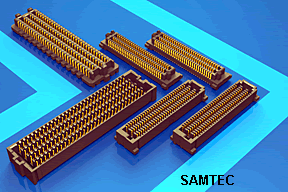
Use of stacked mezzanine cards is a common characteristic of embedded computers. A series of high-speed mezzanine connectors such as the Samtec SamArray and SEARAY are defined in VSO standards and allow designers to easily add custom functions and scalability to a standard motherboard.
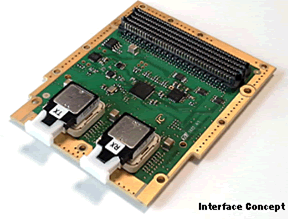
Optical transmission of high-speed signals with advantages of bandwidth, security, size, and weight is becoming more common in embedded computers. On-board optical transceivers from Reflex Photonics can provide 12 lanes at 25 Gb/s/lane to deliver 300 Gb/s of full duplex data. Samtec optical “flyover” transceivers have appeared on several embedded systems.
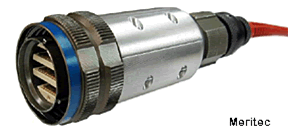 Meritec offers a new active optical cable assembly and media converter that operates at up to 40 Gb/s. This device is packaged in a standard MIL-DTL 38999 shell.
Meritec offers a new active optical cable assembly and media converter that operates at up to 40 Gb/s. This device is packaged in a standard MIL-DTL 38999 shell.
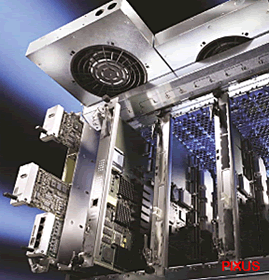
Cramming high-performance circuitry in small, often sealed enclosures, creates serious thermal issues. Passive cooling is being supplemented with higher efficiency strategies including the use of optimized fan trays.
Liquid-cooled cold plates can allow operation of high performance systems in sealed enclosures.
Embedded computers and the hardware needed to support them will continue to evolve as next generation applications in radar, signal intelligence, imaging, drones, electronic warfare, as well as energy management proliferate.
To read Bob Hult’s 2017 DesignCon trends report, click here.
Recently posted:
[related_posts limit=”10″]
- Optics Outpace Copper at OFC 2024 - April 16, 2024
- Digital Lighting Enhances your Theatrical Experience - March 5, 2024
- DesignCon 2024 in Review - February 13, 2024




